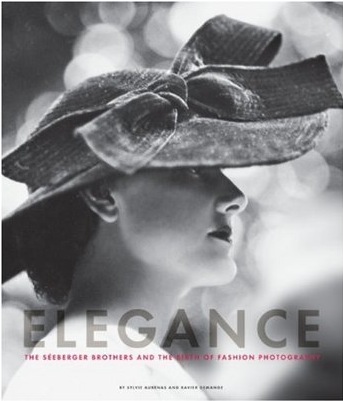A fascinating chronicle

When it comes to fashion – the great years of fashion through 1960, that is – the interested student can indulge in one stop shopping with no fear of missing anything of importance. And that one stop is Paris. Throughout the first sixty years of the twentieth century the domination of this creative center of the world was all you needed to know about, a natural magnet for the best and the most innovative in the world of women’s clothing and accessories. Poiret, Vionnet, Chanel, Gres, Balenciaga, Dior – the list is a Who’s Who of the nucleus of clothing design.
Naturally, the greatest photographers of the age gravitated to this force of nature, and it certainly didn’t hurt that their city of choice was the most beautiful the western world had to offer. It remains so to this day. While the British were busy trying to hold on to a fading empire and the Germans were busy killing everyone, the French devoted their efforts to what the French do best. Great clothes, great design and great food. A casual visitor to the City of Light need only glance at the delicious filigree cast iron entrance to any Metro station and he will know that there’s something special in the air.
So the best photographers either ended up in Paris or were to be found photographing Parisian fashion for Vogue and Harper’s. If you liked high-end kitsch Baron de Meyer and Beaton were your first port of call. High style romantics gravitated to Hoyningen-Huene. Ascetics to Penn. And the cubist set settled on Horst P. Horst. That was the top end. But Vogue needed to fill its burgeoning page count with more than any one of these exemplars of taste and quality could produce so they went to the journeymen of the fashion photography world, the Seeberger brothers. Unlike the Penns et al of the photo world the Seebergers never made it into society or the salons. They were tradesmen photographers and traded quantity, in the guise of snaps of the latest fashions, for quality. And the magazines bought their work throughout the period.
This book is a fascinating look not only at the fashions of the era but also at the gargantuan output of the three brothers – you cannot distinguish the work of one from that of the others. It’s production line quality. Invariably taken at the racecourses of Paris, where the smart set liked to show off its finery, the pictures show both the rich and the ‘plants’ (models masquerading as society to better show off Chanel’s latest) in a functional way. The emphasis is totally on the clothes, gowns often photographed from behind to show off the details. If there’s a sea change in photographic style here, it occurs in 1935 when the brothers migrated from 5″ x 7″ glass plate ‘portable cameras’ (the book’s words, not mine – tripods were forbidden at racecourses, so these monsters had to be hand held!) to the Rolleiflex. Depth of field suddenly changes from isolated to contextual, and for the better. You can make out the setting without being distracted by it, whereas in the earlier plate camera pictures, backgrounds are completely blurred, often to distraction. Witness the pre-Rollei cover picture, above.
This is a lovely book, with a compelling, well informed narrative. In 1970 the Seebergers’ collection passed to the Bibliothèque Nationale de France where, mercifully, it safely remains to this day.